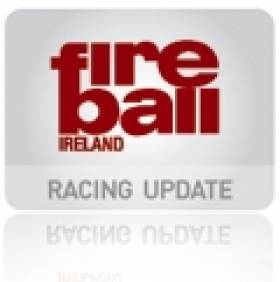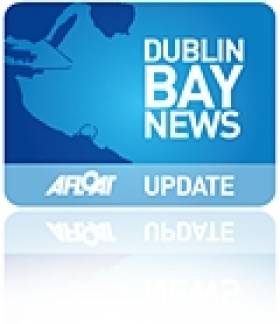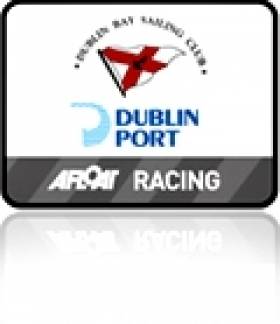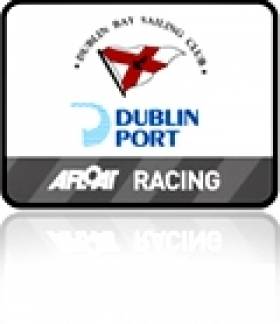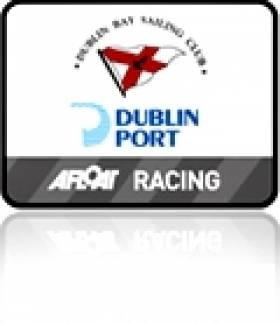Displaying items by tag: INSS
Fireball Open Day at INSS for Ireland's 'Most Dynamic Dinghy Class'
The Irish Fireball Class is hosting an Open Day on November 30th to try and recruit new members to the Class.
The plan is to show the boat set up, have video footage of Fireballs in all their glory and get newcomers out on the water to sample one of the fastest dinghies on the Irish sailing scene.
Timings for Saturday 30th November are below at the Irish National Sailing School venue on the West Pier in Dun Laoghaire
Two sessions @ 11:00 and 13:30.
11:00 – 11:15 Meet & Greet & video footage
11:15 – 12:15 On the water
12:15 – 13:00 Back to INSS, hot showers, debrief.
13:30 – 15:30 Repeat the timetable above.
RSVP: [email protected]
Mobile: (On the day) 086 190 8463
If you are a sailor bring your own gear, we will provide trapeze belts!
#Sailathon – 60 members of the Irish National Sailing School's Junior Club (aged between 7 - 18 years) took to the water to sail in Dun Laoghaire Harbour as part of Sail-a-thon 2013, a sponsored charity sailing marathon in aid of Crumlin Children's Hospital. This free charity event started at 9.30am on Sunday morning (April 7th) and was organised event by Maelstrom Project Management Team (the INSS's Senior Instructor Andrew Abbott and his project management team from UCD Michael Smurfit Business School) in conjunction with the INSS's General Manager Kenneth Rumball.
The event itself had over 30 boats on the water for 8 hours of the day battling 25 knots of wind with participants enjoying sailing-games, the Sail-a-thon Regatta and general all out the fun.
At the end of the day, having pushed themselves for a good cause, the participants got to relax and celebrate their hard work with a delicious BBQ and a large prize-giving ceremony and presentation with participants being presented with trophies for the Sail-a-thon Regatta and dozens of prizes for the participants who raised the largest amounts of money.
Together the Sail-a-ton team and participants managed to raise €6,089.73 and a cheque for this amount was presented at the ceremony to Gerry Cully, Children's Medical & Research Foundation's (Crumlin Children's Hospital) Community Fundraising Executive. "For us the event was a huge success." claimed Sail-a-thon Project Manager Andrew Abbott. "Our goal was €5,000 and thanks to the hard work of all the participants, my team and the instructors who gave up their time to help our event, we managed to surpass it. I can't thank them enough".
If you would like to help this cause, donations can be made until April 30th via the Sail-a-thon sponsorship age http://www.cmrf.org/sponsorshipPage/show/1269.
#sailinginstructors – 16 instructor candidates have successfully passed an intensive one week Royal Yachting Association (RYA) Dinghy Instructor course at the Irish National Sailing School (INSS) in Dun Laoghaire.
The new instructors have been working hard since last October to to successfully complete this course.
The three RYA trainers looking after the group were 'hugely impressed with the standard of these instructors and declared them to be a fantastic group', accroding to Kenneth Rumball of the INSS.
The instructors have a well earned break before commencing careers at the Dun Laoghaire Sailing School.
Wind Fills in on Dublin Bay for DBSC Spring Chicken Race
#dbsc – Race 5 of the Dublin Bay Spring Series, would it happen for the Irish National Sailing Club (INSC) crews asked Instructor/Skipper Kenneth Rumball yesterday
Certainly driving down, the coast road to Dun Laoghaire, it was questionable, Dublin Bay was a glassy millpond.
None the less, we rigged up and drifted/sailed out into a waiting fleet in the bay. Freebird had gone off upwind to lay a weather mark as we patiently waited for the breeze to fill in.
Fill in it did and the starting sequence got underway. INSC1 hung around the committee boat while INSC2 & INSC3 were down the pin end. After some confusion caused entirely by the skippers, all boats got underway with all boats late for the start. INSC1s skipper had to be reminded the rest of his fleet had started! Whoops, thinking too much.
The first beat was patchy with INSC1 taking an initial route up the middle of the course while INSC2 chose a one tack wonder out to the right of the course! INSC3 took a route more up the left of the course! It turns out INSC2 had the best route, getting into the building Easterly breeze, INSC1 moved from the middle to the right of the course. At the top mark, it was INSC1 & INSC2 neck in neck at the top mark ahead of the fleet who were now getting into the breeze. INSC3 was struggling up the beat but powering past the rest of the fleet from start 3. INSC1 took a route down the right of the run while INSC2 went down the left of the run. No major gains or losses for either boat.
However at the bottom mark, the J109 Ruth did INSC1 a massive favour by sailing on top of INSC2. This enabled INSC1 to gain back their advantage. A close tacking duel between the two boats up the rest of the right of the beat was hard work for all crews.
The finish was to be at the top of this beat, we all finished in a great building breeze with the sun just coming out. If DBSC arranged the weather, it could be related to a Carlsberg advertisement. INSC1 was second across the line to the J109 Ruth with INSC2 6th across the line, with Orna and the A35 Another Adventure getting in their way.
Muglins Rock Provides Great Downwind Course for DBSC Spring Chickens
#dbsc – A sunny morning greeted the three INSC boats in the 2013 DBSC Spring Series, however with a windy forecast and some strong gusts in the inner coal harbour, questions were asked, were we going to be going ahead? Kenneth Rumball, a skipper of one of three Irish National Sailing School boats reports on yesterday's outing.
The answer was of course we were! Keeping the same crews, everybody was eager to get out and experience the first of the series' big easterly swells with gust of up to 31kts, the decision to go for fractional kites only was the most sensible and logical option for every boat.
The course was announced of a start line just off the East Pier, a beat up to the Muglins Island with the Muglins itself being the weather mark, followed by a sprint downwind, a gybe around the pin end of the line and the yellow turning mark being our leeward before a short fetch to the finish line between 'Freebird' and the West Pier Lighthouse.
INSC 1 (Kenneth Rumball) and INSC2 (Noel Butler) started on the committee boat end of the line with INSC2 getting the better, clearer start but unfortunately then, they decided to do a spot of trawling, letting their kite fall over the side. INSC3 (Andrew Boyle) were just behind with clear air, allowing them to get going quicker than the others.
INSC1 went in close to the shoreline of Sandycove and Dalkey to keep out of the tide and also get into the flatter water allowing for improved boat speed. INSC 2 & 3 took a more offshore route. At our weather mark of the Muglins Island, we were greeted by a 3ft swell and a tide well on the way in. Nervous moments for all as we navigated the choppy congested waters to ensure a good rounding and ultimately a safe one, we witnessed some boats getting uncomfortably close to the rock.
The sleigh ride downwind is unbeatable in a 1720, turning the boat from keelboat to dinghy! Hoists on all boats were delayed as even the more experienced crew on other boats had trouble hoisting, A35s and J109s were seen broaching and crash gybing in the windy weather. All boats powered downwind even on the fractional kites with big grins on all crews faces.
Coming into the last mark, INSC1 was ahead but INSC2 held their kite longer, closing the gap between the two boats but the finishing order was INSC1, INSC2, INSC3. Tired crews gladly headed for the harbour mouth and the warmth of the National Yacht Club.
We're all looking forward to it again next week, with some crews wanting to put the big kites up in that breeze!
INSC Learn to Sail Boats take Line Honours in DBSC's Spring Chicken Series
#dbsc –Dun Laoghaire's Irish National Sailing (INSC) are off to a flying start in boats in the DBSC Spring Chicken Series that got underway yesterday on Dublin Bay. Here's the INSC's Kenneth Rumball on the day's adventures in the Cruiser and sportsboat series sponsored by Viking Marine.
After last week's postponement, three INSC 1720s ventured out into a building westerly breeze with a lumpy sea and dark wintery drizzle for the start of yesterday's DBSC Spring Series.
Hats, gloves and full waterproofs were the order of the day. After a short postponement, our 1720s got away in the third start. Kenneth Rumball, Noel Butler and Andrew Boyle were the three skippers of the boats. Noel and Kenneth started at the pin end with a strong pin bias while Andy was a little bit further down the line. We tackled the long port leg leaving most of the boats in our start in our wake and catching some of the start 2 boats by the first mark.
Even though the breeze was building and there was talk of rigging the fractional kite as opposed to the masthead, INSC 1 (Kenny) went for the big kite and gybed away after the windward mark into the stronger tide. INSC 2 (Noel) opted for the fractional kite and stuck to the right of the run. INSC 3 (Andy) had also gone for the masthead and was tearing down the middle of the run. By the leeward mark, INSC 1 rounded just behind the RStGYC 1720 Luna Sea with INSC 3 and then INSC 2.
INSC 2 and INSC 3 enjoyed a fantastic battle throughout the race with INSC 2 only getting ahead due to a suspect spinnaker hoist!
The three INSC boats continued to work through the pack and by the last downwind, INSC 1 was just behind Luna Sea. With some great teamwork from the crew, we gybed on Luna Sea on the line, pipping them to a line honours finish in the first race of the DBSC Spring Series.
A great start for INSC 1 and great racing for all INSC 1720s in our race training program!
Dublin Bay Turkey Shoot Gets Novices Out Racing & Winning!
#inss – On foot of the Tuesday Night DBSC series designed to get novice racers out racing in Dublin Bay, in which the Irish National Sailing Club and the Royal Irish Yacht Club usually fielded three boats each on most Tuesday nights, the idea came along to have both organisations work together to keep interest up and get people sailing through the winter.
INSC1 & INSC2 were crewed by members of the Royal Irish Yacht Club in a programme conceived by Kenneth Rumball and Patricia Judge of both racing and offering Royal Irish members the chance to compete and learn new skills during the 2012 Turkey Shoot Series.
INSC1's original crew of Kenneth Rumball (skipper), David Boyle, Jeff Greene & Anne Bergin spent the Saturday before the start of the series out training in Dublin Bay in a very strong Westerly, learning how to manage a fractional asymmetrical kite on a 1720 in 25kts of breeze. With a few knock downs and some wet feet, everybody came in tired yet full of enthusiasm ready for race one the following week.
The conditions on race day one greeted us with a big north easterly swell and 30kts of breeze. We launched full of optimism and though sailing well, we had a dismal day, crossing the line as one of the last boats on the water.
The following Sunday, our crew had changed with Steve Finn and Sue Malone joining the boat as Jeff Greene had suffered illness and could not sail with us. Steve and Sue are regular sailors with the Irish National Sailing Club, sailing most Saturdays and on other club events. With this crew we sailed out very much looking to prove ourselves. This we did, we started to sail very well with all crew learning on a very steep curve about how we want to sail and how to perfect the various boat handling manoeuvres.
As a team, everybody kept on learning and improving. The team went from being nervous flying a fractional kite in 15kts of breeze to on the final days being confident enough to hoist, drop, gybe and sail with the masthead 1720 kite in 25kts of breeze, let alone doing this in close proximity to the various J109s and A35s we were racing against.
Sailing a boat with 5 year old Dacron sails and an un-faired hull with anti-fouling more commonly found on a fishing trawler, showed just how much the team could make the boat perform. We had some great highlights including, being just pipped on the line for line honours twice and blasting through the fleet with the big kite up with smiles on everybody's faces.
The final result of second overall for INSC1 was the biggest highlight for all on board. Much murmers and genuine surprise at the prize-giving made it even more worthwhile as the INSC1 crew collected the prize for runners up securing second place overall in the 2012 DBSC Turkey Shoot.
INSC2 had opted not to have a race training day before the main event. With 5 sailors out for what would be for some their first race experience, INSC2 was to take a slightly less intense approach. None the less, INSC2 had some fantastic results and enjoyed mixing it with the best at the top end of the fleet. With some hot shot visitors on the penultimate day of racing, the grins could not be contained as thy had the big kite up in 25kts of breeze, putting INSC1 under pressure and putting them well ahead of other 1720s racing from the RIYC. Fundamentally the sailors on INSC2 learnt a huge amount from their skippers and drop in crews.
The race-training programme will be developing further. With world-class sailors acting as skippers on the boats that have hundreds of offshore miles and having crewed on top boats that race around the cans, we hope to have more boats out providing race training to give everybody the opportunity to race and learn from the best sailors in Ireland. The race training programme will continue into 2013 with plans already afoot to launch the programme into the spring chicken series.
– Kenneth Rumball
Boat and Engine Stolen from Dun Laoghaire Sailing School
#INSS – A sailing school training boat and an outboard engine have been stolen from The Irish National Sailing School (INSS) at the West Pier in Dun Laoghaire.
The 'FunYak' boat was stolen last Saturday night and the an 8hp Yamaha engine was stolen last night.
Ahoy Me Irish Hearties as “Treasure Island” Sets Sail for TV Screenings
#ON THE TV-It's just over a year ago to when filming took place for parts of the TV Movie "Treasure Island" off Dalkey Island, as previously reported on Afloat.ie. Fans of the classic Robert Louis Stevenson 18th century tale can look forward to this new two-part adaptation starring Eddie Izzard as the one-legged pirate, Long John Silver, on New Year's Day on Sky 1 HD at 7pm and also at the same time on 2nd January, writes Jehan Ashmore.
Joining the Emmy award winning Izzard is BBC TV series Spooks actor Rupert Penry-Jones and Hollywood stars Donald Sunderland and Elijah Wood.
The nautical scenes where set on board Square Sails tallship, the barque Earl of Pembroke which used Dun Laoghaire Harbour as a base. During the Irish scenes, the production crew and members of the cast had to endure the bitterly artic-like conditions of last winter's big freeze as the 174-tonnes barque was off The Muglins Lighthouse with a camera-equipped helicopter whirling above.
Following the shoot in Ireland which involved Dun Laoghaire based Parallel Film Productions and the Irish National Sailing School (INSS) which provided marine co-ordination services for the drama commissioned by Sky 1 HD TV Chanel, the shoot re-located to Puerto Rico in the Caribbean.
To watch a first look-official trailer of the long-awaited swashbuckling adventure click HERE and for more about the drama including a Q&A with the cast click HERE.
- Dublin Bay News
- Treasure Island
- Parallel Film Productions
- Dun Laoghaire Harbour
- Irish National Sailing School (INSS)
- Dalkey Island
- INSS
- Eddie Izzard
- Robert Louis Stevenson
- Rupert PenryJones
- The Muglins
- Maritime TV Programmes
- Sky 1 HD Channel
- TV Movie 'Treasure Island'
- Donald Sunderland
- Eliyah Jones
- On The TV
- BBC TV series Spooks
- Square Sails
- The Muglins Lighthouse
“Treasure Island” Sea-Scenes Start Shooting

Earl of Pembroke with helicopter above off The Muglins. Photo. Jehan Ashmore/ShipSNAPS
The two-part production starring Emmy award winning actor Eddie Izzard, is to play the role of iconic one-legged pirate, Long John Silver in the classic Robert Louis Stevenson 18th century tale of adventure and treasure. Also starring is Rupert Penry-Jones, best known for his spy role in the BBC TV series Spooks.
Since arrival to Dun Laoghaire in mid-November the 145-foot Earl of Pembroke has been undergoing modifications at the Carlisle Pier in preparation of the film. The barque is owned by the Cornwall based SquareSail which specialises in tall ships for film productions. The ship's silver-screen credits include Cutthroat Island, Frenchman's Creek, Hornblower Series III and Longitude.
The Treasure Island shoot involves two Dun Laoghaire based companies, Parallel Film Productions and the Irish National Sailing School (INSS) which is providing marine co-ordination services. The drama was commissioned for the Sky 1 HD TV channel and the director is Steve Barron (Arabian Nights, Merlin, England Manager).
The production follows 'Neverland' a two-part prequel to the Peter Pan story also produced by Parallel Films. Neverland was shot on the coast at Dalkey Sound, Killiney Hill in Co. Dublin and neighbouring Co. Wicklow. Both productions are part of a multi-million pound investment by Sky for their high-definition (HD) drama department.
In the New Year the Treasure Island production moves to Puerto Rico in the Caribbean. The drama is scheduled to be released in Christmas 2012.
Looking for further reading on Tall Ships in Ireland? Click the links below:
Click this link to read all our Tall Ships Stories on one handy page
Previewing Ireland's Tall Ships 2011 Season
Can Ireland Get a New Tall Ship?


























